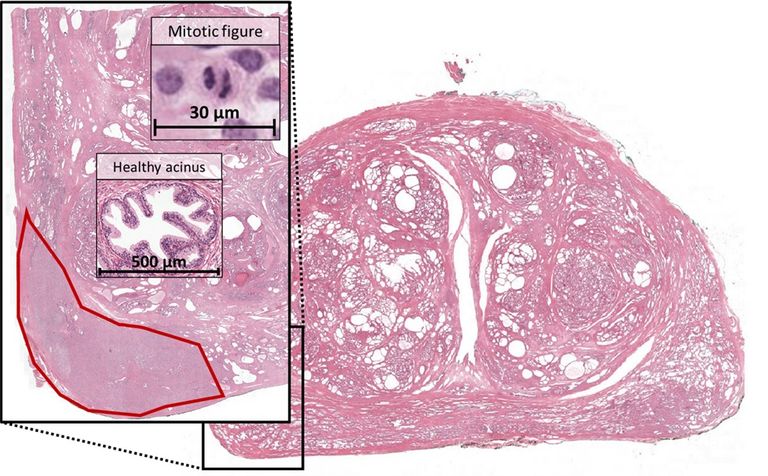
Background
Microscopic assessment of cancer tissue by pathologists is one of the cornerstones of diagnostic and treatment decision making for patients. However, the current assessment protocols, referred to as cancer grading systems, are limited to features that can feasibly be extracted by humans, leaving vast amounts of information captured in cancer tissue unused. Machine learning (ML) has already shown that it is capable of improving the diagnostic performance and efficiency of pathologists in applying the current grading systems. These applications of ML have been handicapped to replicating what humans can do, instead of trying to go beyond that, mainly due to methodological limitations and knowledge gaps around AI transparency and explainability. In this project, you are set to address these knowledge gaps. You will use innovative learning algorithms as well as latest advances in self-supervision, vision transformers, and natural language processing to make deep neural networks more effective in medical applications and endow them with transparency and explainability. You will validate the methodology in the largest dataset of oncological whole slide images in the world.
Tasks and responsibilities
- Work with weakly-supervised learning techniques to build prognostic models for varying cancer types.
- Integrate language and image models to produce interpretable AI-generated reports relating prognostic predictions to descriptive features.
- Collaborate with pathologists and (inter)national researchers to validate your developed algorithms in large cohorts.
- Have fun interactions with colleagues, present at local and (inter)national conferences, and develop yourself as an independent researcher.
Profile
You are a creative and ambitious researcher with an MSc degree in Computer Science, Data Science, Engineering, Technical Medicine, Biomedical Sciences or similar, with a clear interest in artificial intelligence and medical image analysis. Good communication and organizational skills are essential. Experience with deep learning and programming, preferably in Python, are a plus and should be evident from the (online) courses you've followed, your publications, GitHub account, etc.
Organization
Computational Pathology Group
The Computational Pathology Group is a research group of the department of Pathology of the Radboud University Medical Center (Radboudumc). We are also part of the cross-departmental Diagnostic Image Analysis Group (DIAG) at Radboudumc, with researchers in the departments of Radiology and Nuclear Medicine, Pathology and Ophthalmology.
We develop, validate and deploy novel medical image analysis methods, usually based on deep learning technology and focusing on computer-aided diagnosis (CAD). Application areas include diagnostics and prognostics of breast, colon, prostate and lung cancer, among others. Our group is among the international front runners in the field, evidenced for instance by the highly successful CAMELYON and PANDA Grand Challenges which we organized and published in JAMA and Nature Medicine.
Radboudumc
Radboud university medical center is a university medical center for patient care, scientific research, and education in Nijmegen. Radboud university medical center strives to be at the forefront of shaping the healthcare of the future. We do this in a person-centered and innovative way, and in close collaboration with our network. We want to have a significant impact on healthcare. We want to improve with each passing day, continuously working towards better healthcare, research, and education. And gaining a better understanding of how diseases arise and how we can prevent, treat, and cure them, day in and day out. This way, every patient always receives the best healthcare, now and in the future. Because that is why we do what we do.
Read more about our strategy and what working at Radboud university medical center means. Our colleagues would be happy to tell you about it. #weareradboudumc
Application
Please apply before May 16th, 2022 via this link. Here you can also find more information on the application process and what needs to be included in your application.
